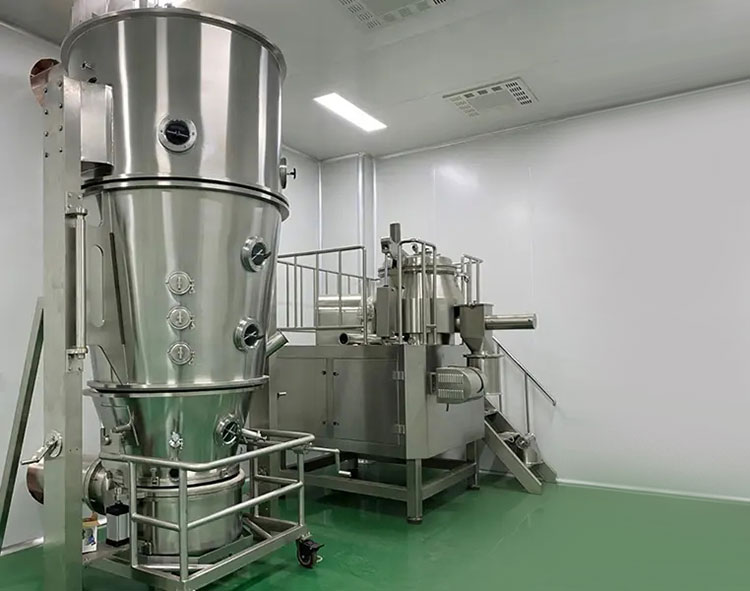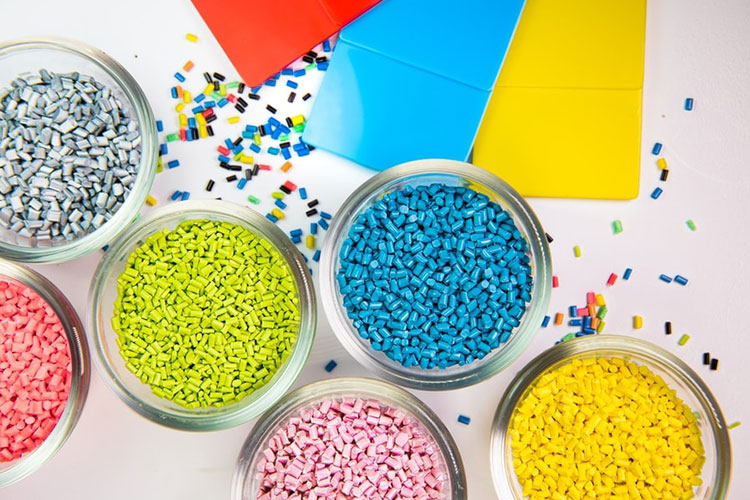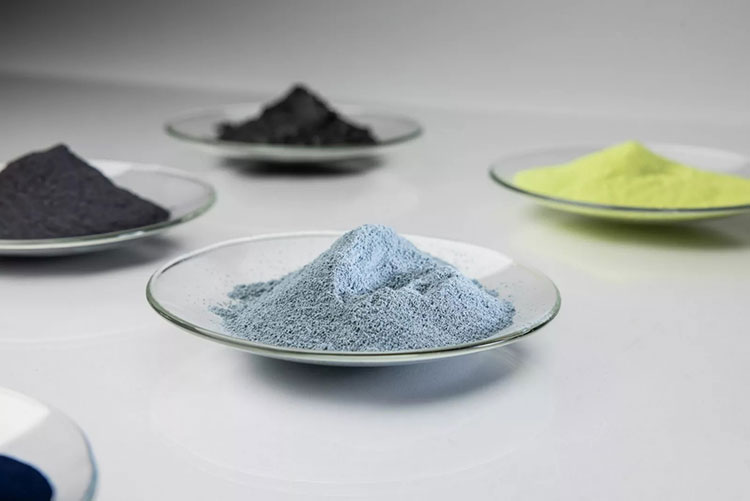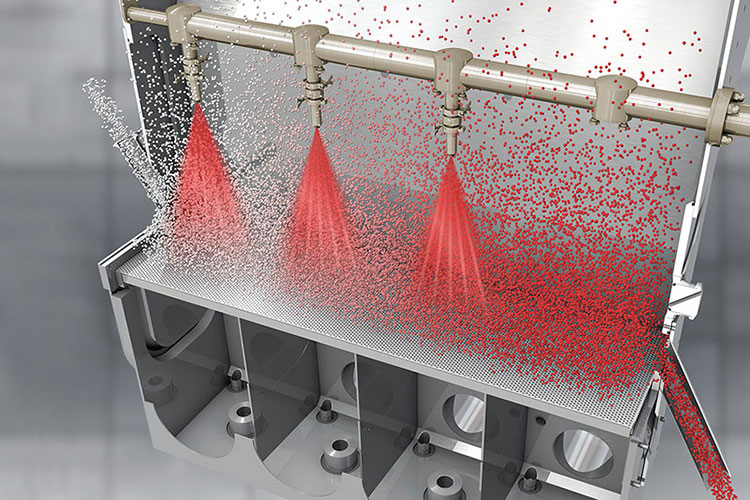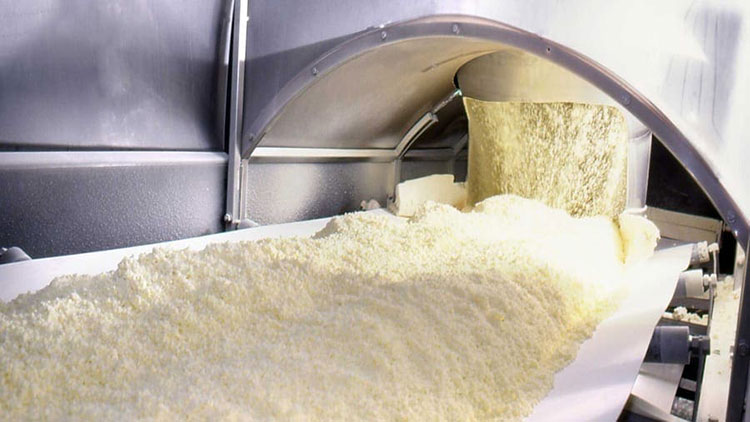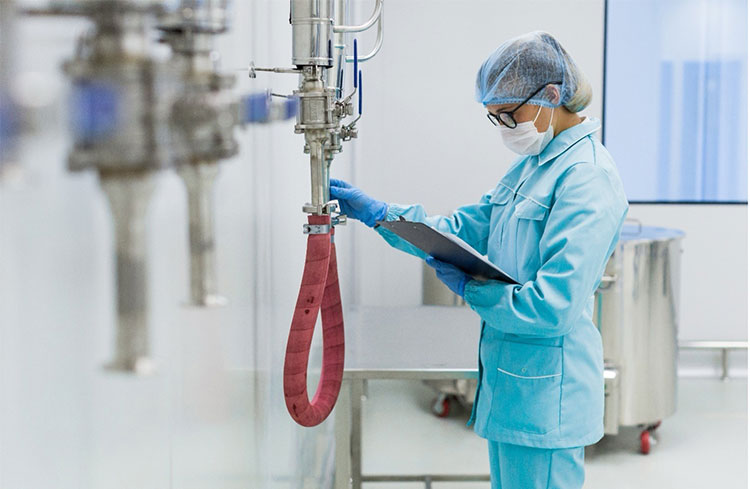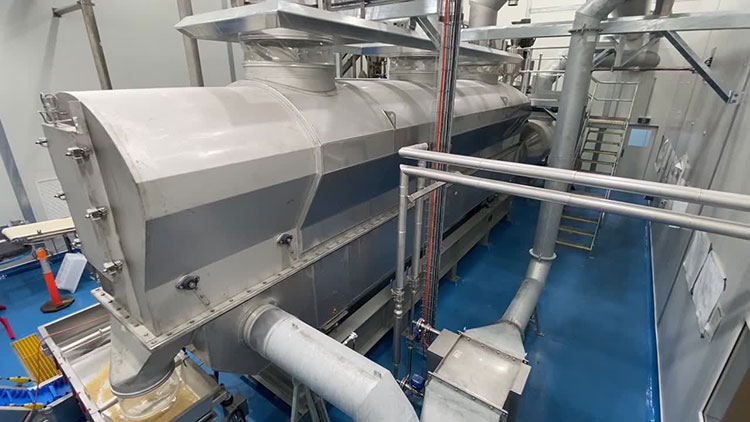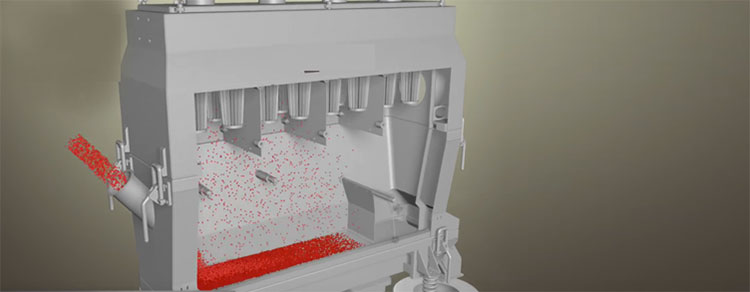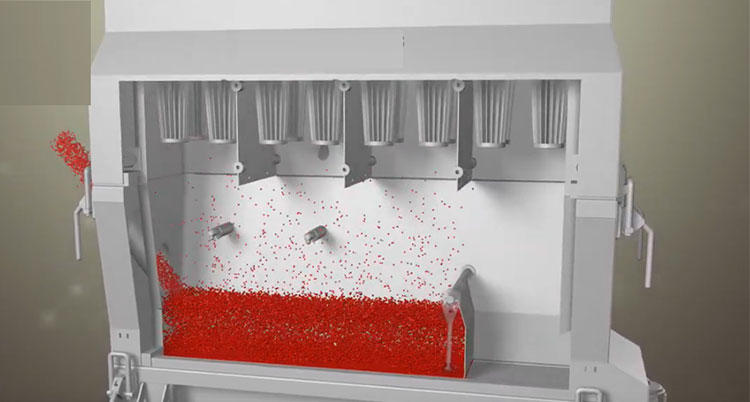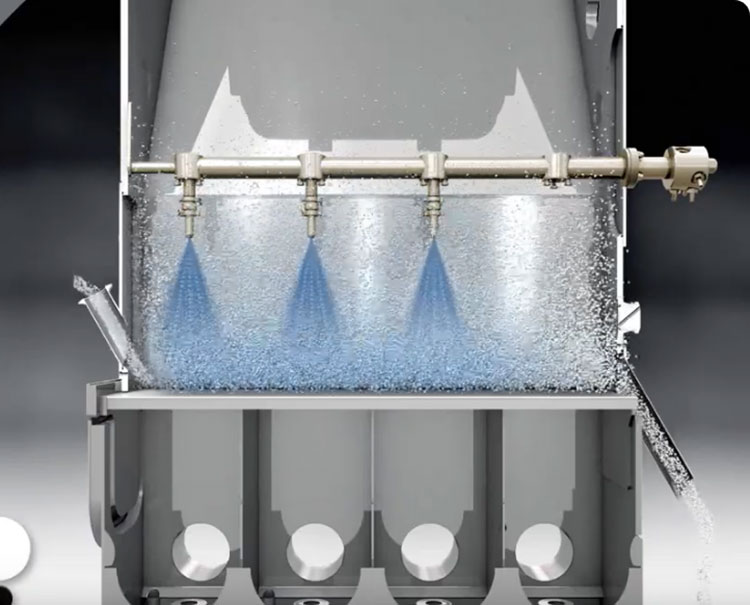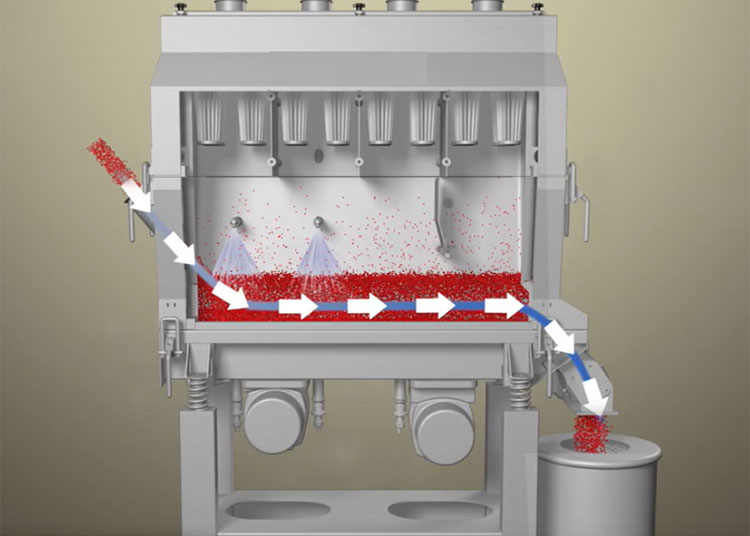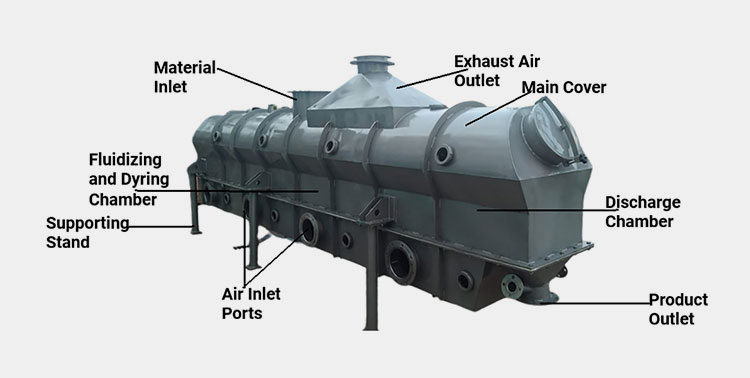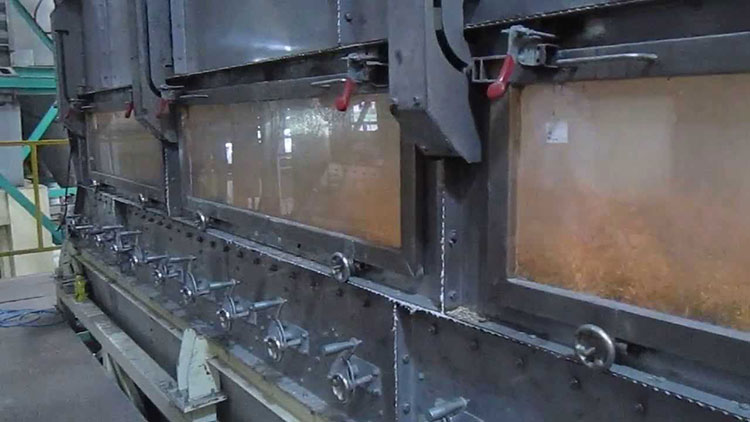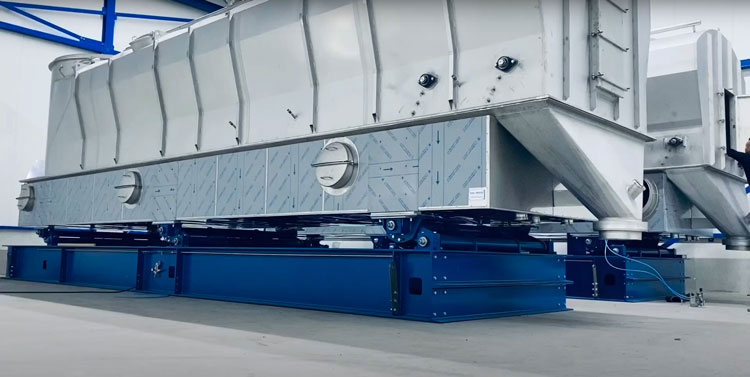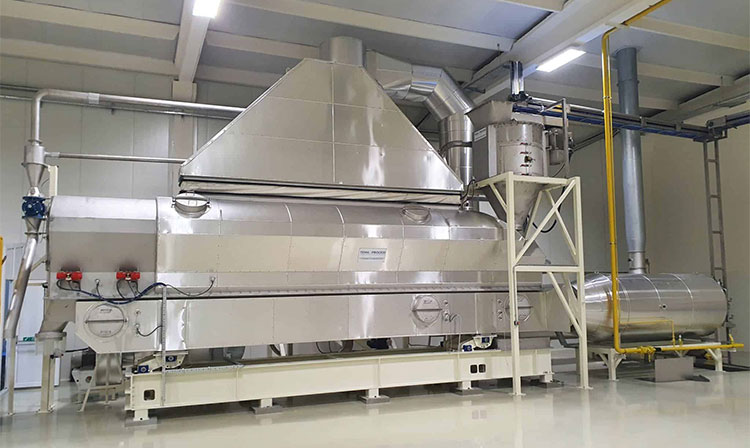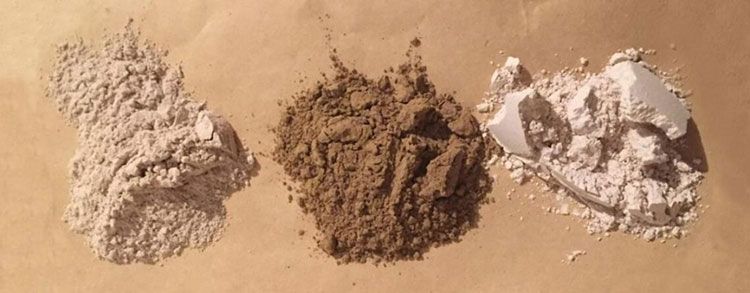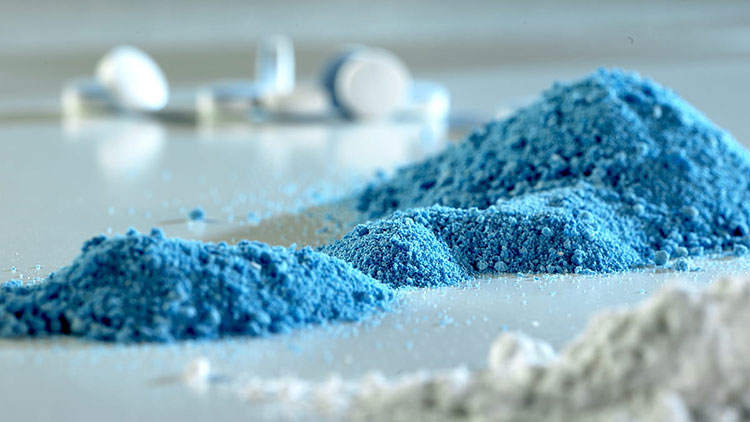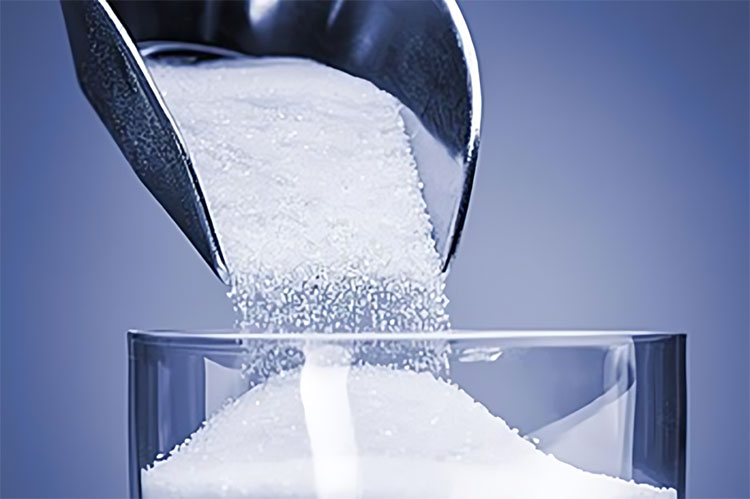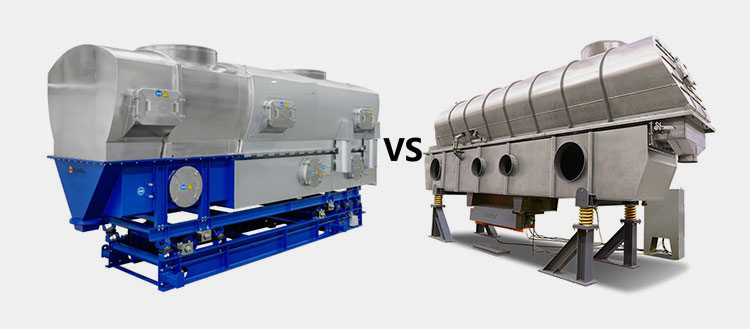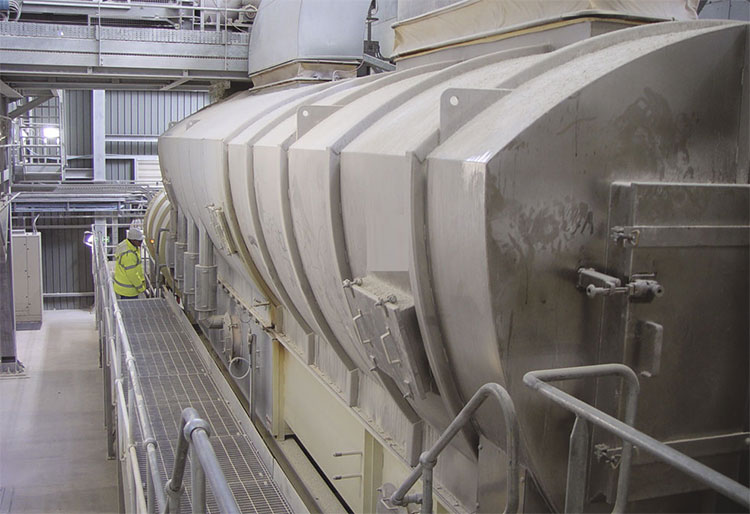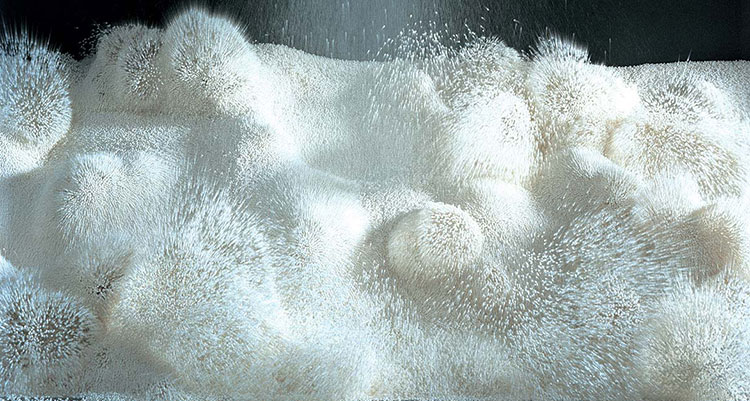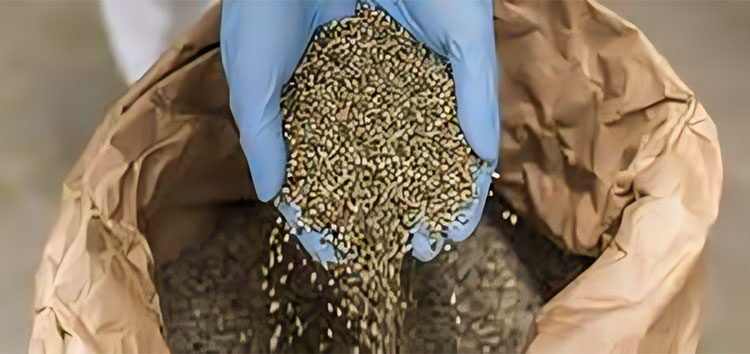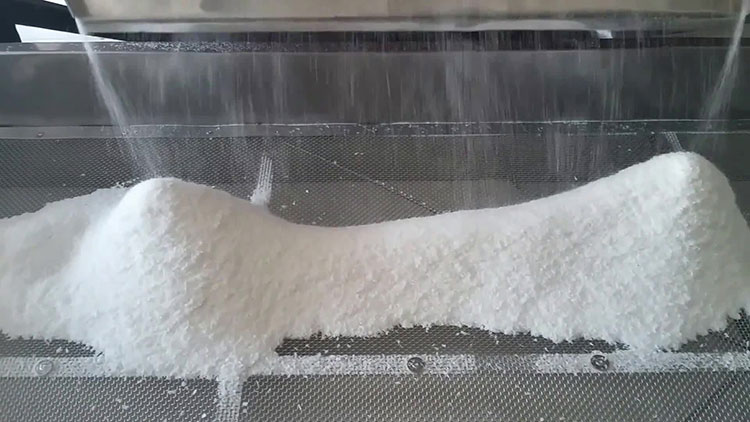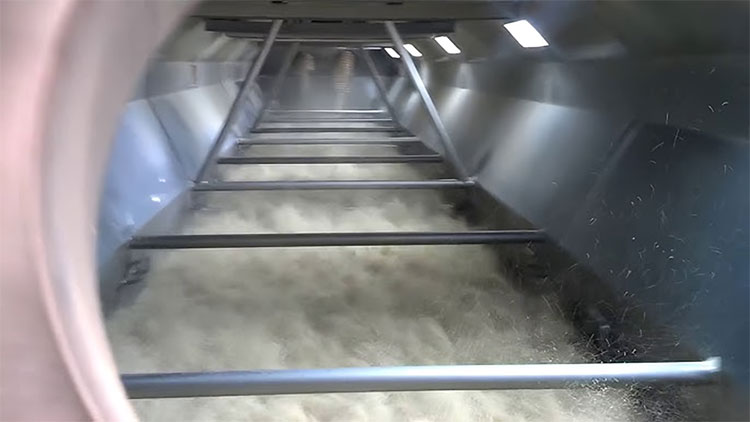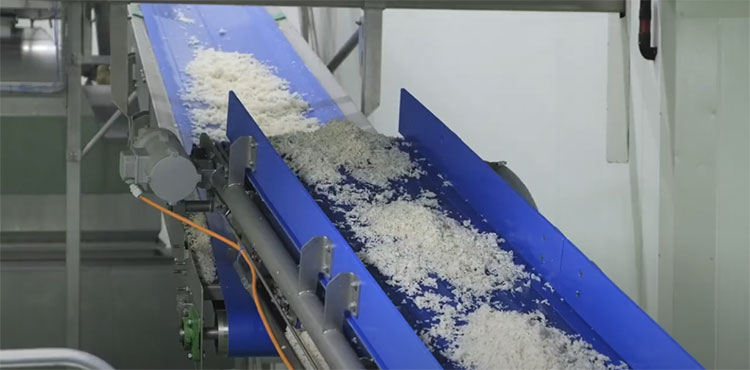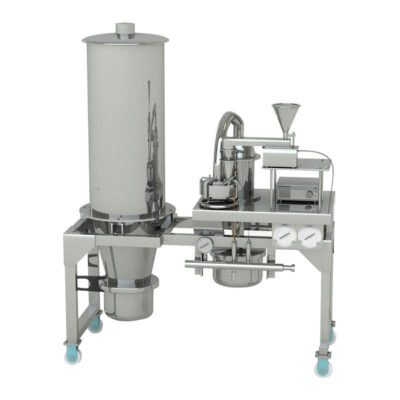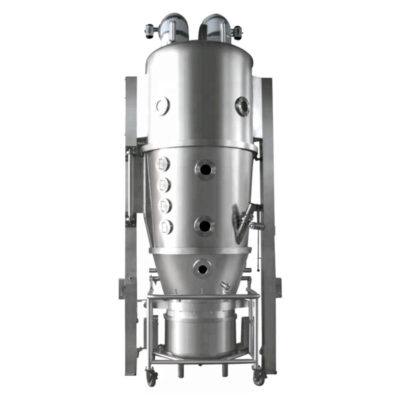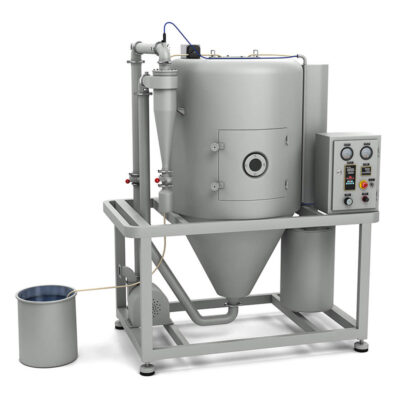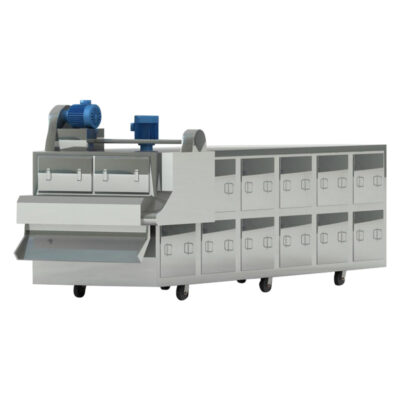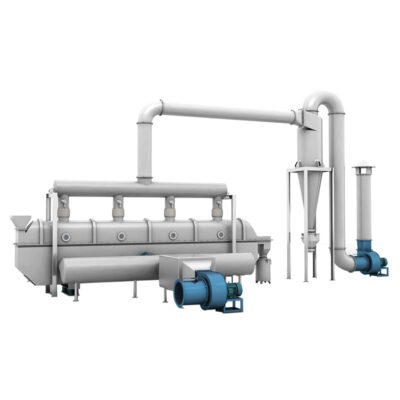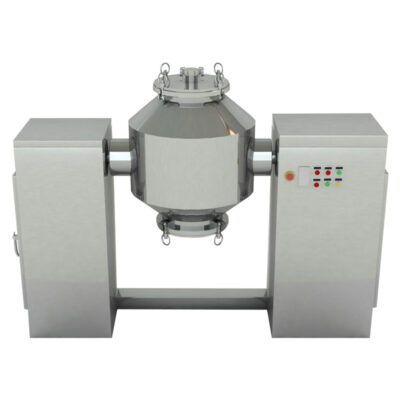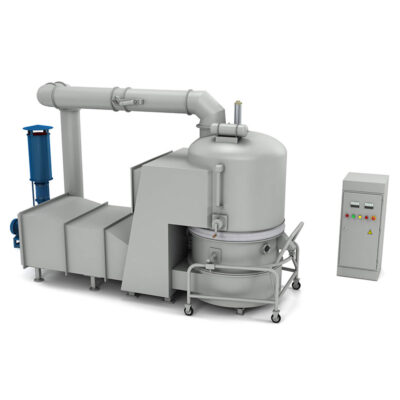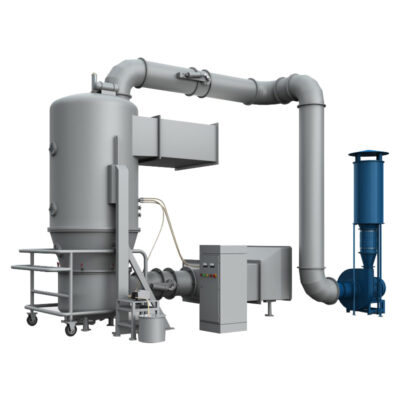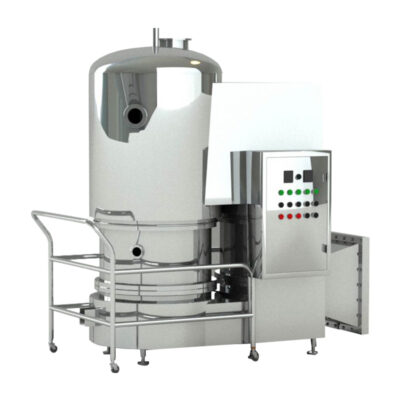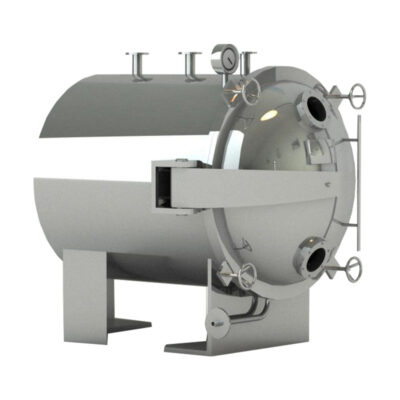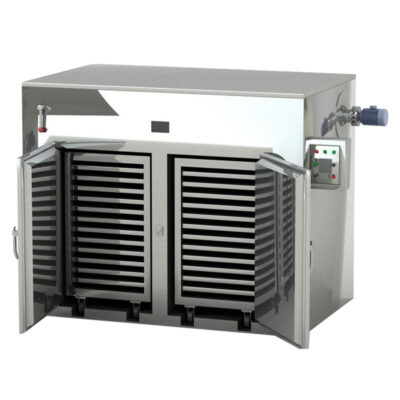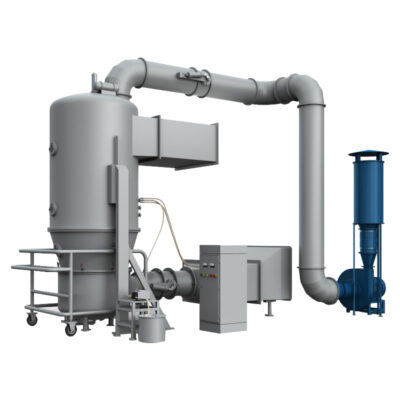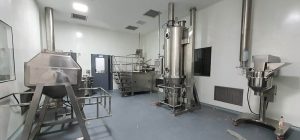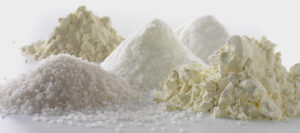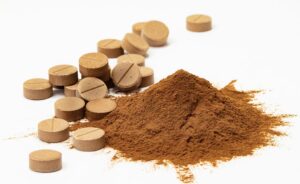Continuous Fluid Bed Dryer: The Complete Buying Guide In 2025
How does a continuous fluid bed dryer meet the large production lines? Nevertheless, most of the dryers present in the market process materials in sub-batches. These dryers are unable to cater to the requirements of continuous drying, resulting in reduced productivity and long operational time.
Is there any dryer that carries out drying continuously? Yes, an innovative and heavy-duty industrial dryer called a continuous fluid bed dryer is manufactured to achieve high-throughput drying. It is a preferred unit in industries because of its low energy demands, gentle processing, low downtimes, and uniform drying. But what is actually happening inside this machine? How does this machine attain a long servicing life?
In this guide, we’ll delve into the science behind the continuous fluid bed dryer and how it is considered a keystone in various industrial operations. This blog post will detail all the essential facts important for precisely operating this piece of technology.
1.How can you define a continuous fluid bed dryer?
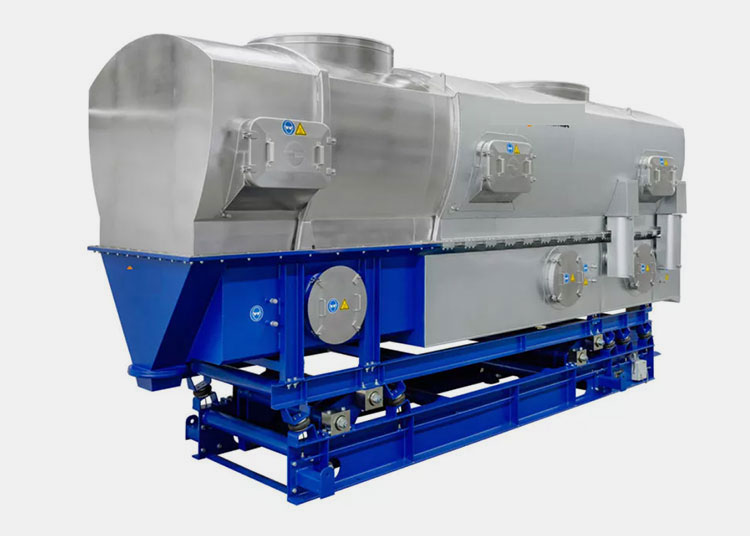
Continuous Fluid Bed Dryer- Picture Courtesy: Making
A continuous fluid bed dryer is a type of industrial dryer that is well-accepted in almost every kind of manufacturing sector because of its continuous mode of drying. It undertakes a hefty job of dehydrating moisture content in a steady manner. Why does it is called a continuous fluid bed dryer?
It is easy, the term “continuous” comes from its consistent mode of operation without taking any breaks. The materials are loaded continuously from one end of the dryer, they move through different drying zones and are finally offloaded from another end.
The term “fluid bed dryer” was coined because this equipment is basically the variant of a fluid bed dryer. Similar to the latter, in this device the feed particles are suspended in the bed with an upward flow of air. This suspension of particles is extremely successful in establishing increased contact of materials with heated air. So, you’ll attain even faster moisture evaporation with no possibility of product buildup.
2.What manufacturing sector requires a continuous fluid bed dryer?
A continuous fluid bed dryer is an extraordinary invention that radically increases the chances of production growth and expansion because it consistently works 24/7 to generate the end products with optimum moisture levels. That’s why, it is a favored choice for removing watery content in different industries. Some of the significant manufacturing sectors employing this machine are:
Pharmaceutical Sector
Pharmaceutical Pills- Picture Courtesy: Europabio
This sector is continuously evolving to process and manufacture hundreds of different products, for instance, tablets, capsules, granules, powders, and pellets daily. Drying is a core step in this sector for increasing potency, stability, and quality of medications. Because moisture is usually the most common reason for ruining the effectiveness of drugs. This competence in drying is only possible by utilizing a continuous fluid bed dryer in the pharmaceutical sector.
Food Sector
Food Powders
The use of a continuous fluid bed dryer in the food sector is more common than you would’ve thought. The reason? Because it is an ideal machine that vaporizes the moisture from food products (grains, cereals, snacks, instant powder mixes, soup blends, spices, and dairy products) at skyrocketed rates while preserving their taste, freshness, vibrancy, nutritional value, and aroma.
Chemical Sector
Plastic Resins- Picture Courtesy: HD Chemicals
The removal of water particles from chemical materials is essential in the chemical industry because it lessens the probability of undesired chemical reactions and increases the stability of chemical compounds. All this plus more is offered by a continuous fluid bed dryer. It is a safe bet to dry plastic pellets, detergents, soda ash, salts, and other granular and crystalline chemicals.
Mineral and Metallurgical Sector
Metal Powders- Picture Courtesy: Plansee
With the discovery of more and more metal and mineral sources, it is becoming imperative to take out moisture from metallic and mineral feed, for instance, ores, sand, gravel, clay, limestone, and ceramics in large amounts. Hence, a continuous fluid bed dryer is a fundamental component of this sector, as it is fabricated to accommodate abrasive and heavy materials. And make them safe from shipment and distribution.
Agriculture Sector
Agricultural Feed
Imagine you’re involved in the agricultural sector. You would certainly want your animal feed, fertilizers, pesticides, manures, and soil conditioners to have an ideal moisture rate for the ideal growth of plants and animals. A continuous fluid bed dryer is the key to unlocking moisture control in agricultural feed.
3.Can you list the advantages of a continuous fluid bed dryer?
Certainly, a continuous fluid bed dryer has a long list of benefits that not only provide convenience to developers but are also pivotal in generating a significant amount of income for them. You can effortlessly and incessantly remove solvent content from the feed without dividing it into smaller batches and waiting for longer times. Let’s read about the processing and economic advantages of this equipment:
Superior Drying Rates
Superior Drying Rates- Picture Courtesy: Glatt
Optimized drying rates are preferred because of their productivity in the relatively shortest time possible. And continuous fluid bed dryer is characterized by its superior drying rates. The fluidization of materials has a significant role in uniformly subjecting particles to heated gases. Which boosts its heat transfer capabilities and even drying across the whole feed without any issues of hot spot and moisture retention.
High Throughput Percentage
High Throughput Percentage- Picture Courtesy: Dairy Business Africa
Yes, this device is made for continuous drying processing, allowing you to unceasingly de-moisturize materials without any disruption and delays. There is no pause on drying and batch change with this machine. Hence, you can make the most of the production time by integrating it. This enhances throughout powers.
Fine-Tuned Drying Parameters
Fine-Tuned Drying Parameters
Continuous fluid bed dryer enables you to fully control drying parameters with its adjustable settings. You can customize your drying operation and match your drying needs by fine-tuning drying settings, such as temperature, air velocity, and residence time. Besides this, this device is one of the few dryers that have segmented zones for dehydrating. So that, you can have slow or staged drying in your machine.
Scalability
Scalability- Picture Courtesy: Tema Process
One of the handiest advantages of the continuous bed dryer is that it can be conveniently scaled up and down based on your requirements. It can be tailored to pilot plants or heavy-duty productions. How is that possible? You can alter the bed size or add more modules to handle changing production specifications.
Energy Conservation
Energy Conservation- Picture Courtesy: Woodyfuel
Various manufacturers, such as you have made a switch to ecofriendly processing for contributing to environment conservation efforts. Surely, a continuous fluid bed dryer facilitates you and others in attaining the said goals. It operates using low energy because it utilizes airflow to maximize the drying rate rather than solely depending upon electric heaters or fuel. This will also save your utility expenses.
4.What are the stages in the working of a continuous fluid bed dryer?
The dehydrating of feed in a continuous fluid bed dryer happens exclusively because of the ingress of heated air and the fluidization of particles. The materials are in constant motion in the fluidized bed, resulting in more and more exposure of materials to dry gases. And that’s how you attain a homogenous drying in every area of feed.
Let’s delve into the working stages of a continuous fluid bed dryer:
Feeding of Components
Feeding of Components- Picture Courtesy: NEUHAUS NEOTEC
Before beginning the machine run, first, you’ve to introduce raw feed into the drying chamber using either a feeding tank, pipes, or screw conveyor. You must gradually load the materials to avert the chances of feed agglomeration or hot spot. Also, the air is heated through the heating source and blown in a drying vessel via air inlet.
Fluidization of Feed
Fluidization of Feed- Picture Courtesy: NEUHAUS NEOTEC
In some types of a continuous fluid bed dryer, you’ll see a preheating zone in which materials are subjected to warm air for evaporation of the surface moisture before fluidization in the chief drying zone. How are materials fluidized?
When the materials move to the main drying zone, heated air is introduced in the vessel from the bottom, which flows upward and moves the feed particle with its flow. This lifting motion leads to the suspension or fluidization of particles. A dynamic surrounding is formed in the drying unit aiding in the free movement of particles and their constant exposure to hot gases.
Drying of Moisture
Drying of Moisture- Picture Courtesy: GLATT
Liquid particles from the moist feed come to the surface by the transfer of heat energy and are ultimately vaporized from the surface. In this way, the unwanted moisture content is evaporated from the feed, leaving behind the dried feed.
Discharge of End-Product and Air Filtration
Discharge of End-Product - Picture Courtesy: NEUHAUS NEOTEC
The end product after attaining the desired moisture level, moved out of the dryer via a discharge outlet. The outlet port is usually connected with a rotary valve or conveyor to have a steady outward flow of materials.
How air is filtered? There are filters or cyclone separators attached to the air outlet and outgoing air is moved through these components to capture dust particles or powdered feed. This allows you to maintain a clean workplace.
5.What are the useful components of a continuous fluid bed dryer?
Having information on important components and their tasks can go beyond in smooth operation of the machine. You can effortlessly diagnose machine problems and resolve them by memorizing their different parts. We’re explaining the useful components of a continuous fluid bed dryer:
Parts of Continuous Fluid Bed Dryer
| Fluidizing and Drying Chamber | It is the core part of the continuous bed dryer, where the magic of particle suspension and drying occurs. It consists of a perforated plate or bed that holds the feed while air is flowing upward. There are viewing windows in this chamber by which you can easily monitor and check the progress of the operation. |
| Material Inlet | From this vent, you load materials inside the dryer. This material inlet is usually attached to a feeder, hopper, or screw conveyor system to gradually and smoothly deposit materials in the machine. |
| Exhaust Air Outlet | You can safely remove moisture-laden and cool air from the drying chamber through an exhaust air outlet. |
| Main Cover | You can have a fully sealed and protective area with a main cover. It contains materials inside the dryer and doesn’t allow feed particles and hot air to leak outside. It is especially important when dealing with heat-sensitive materials because it maintains a controlled environment. |
| Discharge Chamber | It is the last chamber of the continuous fluid bed dryer and is responsible for the controlled discharge of materials from the product outlet. |
| Product Outlet | You’ll acquire dried feed from the machine using this port. It is mounted on the front part of the equipment. You can equip this port with a discharge conveyor or rotary valve to adjust the flow of end-products from the device. By using such systems, you can match the feed loading with the discharge rate. |
| Air Inlet Port | These vents are present at the bottom of the dryer and their function is to introduce the air inside the machine. They are typically linked with fans, heaters, and filters. These devices are integral in supplying, heating, and filtering the air. |
| Supporting Stand | These stands bear the entire weight of the machine and provide stability to the latter. They keep the dryer immobile during operation and prevent its vibrations. Besides this, you can also elevate the machine to provide an area for different inlets. |
6.How does a continuous fluid bed dryer ensure high-quality products?
It is an established fact that a continuous fluid bed dryer yields high-quality products. But what mechanisms does it employ to ensure product quality? So, to put your mind at ease, we are discussing some measures of this instrument for guaranteeing product excellence:
Temperature and Airflow Regulation
This innovative machine has computerized controls that help in retaining the selected temperature in each drying zone. There is a well-thought-out airflow arrangement present in the dryer that evenly disperses the hot air throughout the fluidizing bed. You can also integrate sensors in this equipment to acquire real-time monitoring feedback, which facilitates you in altering temperature and gas flow according to your preference.
Multizone Drying
Multi-zone Drying- Picture Courtesy: Tema Process
This dryer is designed in such a manner that it permits step-by-step drying. Hence, you can gradually remove moisture from raw feed. The starting zones usually operate at increased temperatures to vaporize large quantities of moisture. The succeeding zones have low temperatures to gradually achieve the desired moisture level. So, there is no incidence of case hardening in the product.
Dust Emission Management
Dust Emission Management- Picture Courtesy: Tema Process
A continuous fluid bed dryer is tailored with built-in dust extraction devices. By deploying them, you prevent fine feed particles from escaping and dust contamination. Thus, you’ll attain safe and consistent quality products and can uphold safe and hygienic surroundings for your operations.
7.What types of materials are handled by a continuous fluid bed dryer?
This is the common question in every manufacturer's mind when they are in the process of procuring any machine. They continuously wonder whether the equipment will align with their product characteristics. To address theirs and your worries, we’re reviewing which type of materials are handled by a continuous fluid bed dryer:
Heat-Liable Materials
Heat-Liable Materials- Picture Courtesy: ALPA Powder
These substances deteriorate and lose their functionality when subjected to high temperatures. Therefore, manufacturers are encouraged to install a continuous fluid bed dryer when processing heat-sensitive feed. Why’s that? Because it can work at lower temperatures and de-moisturize materials by changing or increasing airflow movements. Also, it's multi-zone drying gently processes and dries thermo-liable material.
Hygroscopic Substances
Hygroscopic Substances- Picture Courtesy: GEA
This type of feed needs strict management of humidity levels during the dehydrating process. Because it tends to absorb water from the environment. So, they get caky, clumpy, or discolored upon absorbing moisture.
A continuous fluid bed dryer is ideal for drying the said materials because it is integrated with a dehumidifier that stops dried materials from reabsorbing moisture. Also, constant airflow dispersion averts the formation of high moisture pockets in the first place.
Cohesive Feed
Cohesive Feed- Picture Courtesy: Anton Paar
You can effortlessly take advantage of a continuous fluid bed dryer if you’re dealing with sticky feed. By using pulsed airflow, this device a dynamic suspension of materials, which stops substances from setting down or clumping together. This is certainly the problem with other conventional dryers.
8.Is there any difference between a continuous fluid bed dryer and a vibrating fluid bed dryer?
Continuous Fluid Bed Dryer and Vibrating Fluid Bed Dryer
Although both (continuous fluid bed dryers and vibrating fluid bed dryers) follow the same principle of fluidization for drying feed, they could not be more different from each other. So, let’s have an insight into the major differences between both machines:
| Feature | Continuous Fluid Bed Dryer | Vibrating Fluid Bed Dryer |
| Working Operation | In a typical continuous fluid bed dryer, the fluidization of particles is only done by upward movement of hot air. | In this machine, the suspension of particles is attained by combining the vibrational motion of the dryer and the upward-moving heated gas. |
| Materials | You can utilize this machine for de-moisturizing feed consisting of free-flowing particles, for instance, grains, granules, and powders. These substances are fluidized via air only. | Since it adds vibrational pressure to enhance the suspension of particles, therefore, it is well-suited to drying a wide array of materials, including both free-flowing materials and sticky substances. |
| Energy Utility | It is more energy-efficient than the vibrating series of fluid bed dryers because it only uses air and does not require more energy to vibrate the machine. | A vibrating fluid bed dryer utilizes more energy owing to its additional vibration motion. |
| Product Quality | There is a chance of nonuniform dehydration and material accumulation in the dryer. | Due to its vibration movement, there is little to no risk of product accumulation and it also boosts heat distribution evenly across the feed. |
| Maintenance | Due to its simple structure and operation, it typically is easier to maintain. | It needs routine upkeep to maintain motors, and shock systems so it requires more intensive maintenance. |
9.How to ensure the long operational life of a continuous fluid bed dryer?
When you buy the continuous fluid bed dryer, it is your wish that your machine will last long. So, let’s read some suggestions that’ll enable you to realize this wish:
Maintenance of Continuous Fluid Bed Dryer- Picture Courtesy: Agg-Net
| Maintaining and Cleaning Daily | Start your operation by cleaning various parts of the continuous fluid bed dryer. It is essential to wash out filters, drying chamber, discharge outlet, and air inlet. De-clog filters and exchange them periodically. |
| Oiling of Moving Components | You can maintain the working performance of the mobile components, such as drive systems by lubricating or oiling them regularly. By this, they’ll experience decreased wear or frictional buildup and run more proficiently. |
| Routine Examination | Vital parts, for example, covers, perforated beds, stands, heating sources, filters, seals, etc. should be inspected for visible abrasion or defect on a weekly basis. Any damaged component must be substituted promptly to prevent more severe problems. |
| Operating At the Right Conditions | It is imperative to run the machine on temperature and airflow levels that are mentioned in the equipment guide. Also, you must add the right amount of feed in the dryer to minimize the frequency of overburdening. |
| Corrosion Protection | It is fairly easy to protect the continuous fluid bed dryer from rusting and deterioration. You can simply apply anti-corrosive or wear-tolerant coating on the components that are subjected to abrasive feed on a routine basis. Check for corrosion and replace the defective component. |
| Overload Protection | It is recommended to install the sensor in the dryer that detects the level of pressure and temperature and alarms users if any erroneous reading is discovered. Moreover, you can employ safety systems, for example, pressure relief valves and automatic turnoff mechanisms to avert defects from instant pressure alteration and overheating. |
10.What are various technical issues in a continuous fluid bed dryer? How to troubleshoot them?
Sometimes, you would’ve experienced some minor or severe issues in your continuous fluid bed dryer, which interprets smooth flow of production, causing you costly replacements and lower product yield. Are you worried about tackling them? Then, for your peace of mind, we’re mentioning some common technical issues along with their solutions:
Nonuniform Fluidization
Nonuniform Fluidization- Picture Courtesy: GEA
Are you having nonuniform fluidization in your machine? Well, it is the result of irregular airflow, variability in particle sizes, or, lower feeding amount.
Troubleshooting
It is quite straightforward to solve these issues by adjusting the airflow rate throughout the bed. You can alter the fan or blower speed to fix the airflow speed. It is best to sieve or filter the materials to have consistency in the particle size. You can have a steady depth of fluidized bed by controlling the flow of incoming feed.
Lumping of Feed
Lumping of Feed- Picture Courtesy: AVEKA
Did you notice lumps in the feed after its discharge? What are the reasons for clumping in end-products? It could be due to the nature of the feed- either sticky or hygroscopic. In some cases, you’ve inadequate fluidization in your dryer.
Troubleshooting
Paying special attention to certain factors should easily resolve this problem. Like, you must coat the inner surfaces of your machine with anti-caking agents or you could use anti-static agents to avoid the development of electrostatic forces. A vibrating system can improve the fluidity of materials. To improve your material fluidization, you must increase the speed of incoming air.
Pressure Drop Amidst Fluidized Bed
Pressure Drop Amidst Fluidized Bed
Did you detect decreased pressure in the machine bed? If yes, then there are several reasons for this issue like a high amount of feed in the bed, blockage of device filters, and large quantities of ultra-fine particles in the feed.
Troubleshooting
This issue has a simple fix, so don’t stress. You must decrease the material load in the machine to prevent its overburdening. Secondly, regular cleaning of air filters and vents avoids their blockage and in turn, improves resilience to gaseous flow. Also, it is important to narrow particle size distribution to reduce channeling and pressure drop.
Feed Having Spots with Moisture Retention
Feed Having Spots with Moisture Retention
Does your feed have wet spots in some areas and overdried in other parts? It would reduce the quality of products. Various factors contribute to this problem, for instance, inadequate bed temperature, irregularity in airflow, and insufficient drying time.
Troubleshooting
This issue is rectified by running the continuous fluid bed dryer at the right temperature and also by improving the airflow rates. In addition, you can increase the residence time by changing the feed flow or bed depth. It is suggested that properly and uniformly distributing materials in bed can solve this problem.
Product Damage
Product Damage- Picture Courtesy: Tema Process
Are you having trouble with your end-products after drying? Did you spot overheating or degradation? It could be due to increased drying temperature or a high duration of heat exposure to feed.
Troubleshooting
A few simple solutions to this issue are: first, it is instructed to change the temperature limit of the dryer according to the specifications of your feed. If you are having problems with overheating, then you should decrease the residence time by adding more feed in the dryer or reducing the bed depth. Customizing your machine to have multi-zone drying averts increased contact with heated air.
Conclusion
Hopefully, this guide will help you to understand the exceptional qualities of a continuous fluid bed dryer. It flawlessly and uniformly accomplishes drying with its fluidization via heated gases. It is the first choice of manufacturers when it comes to drying heat-sensitive, hygroscopic, and, cohesive feed. Utilizing its advanced multi-zone technology, you would be sure of perfect drying outcomes. Not only this, but this innovative dryer has also heat recovery and cooling utilities. So, contact us immediately to start your manufacturing journey. AIPAK has a comprehensive range of dryers to suit every requirement.
Don't forget to share this post!
Drier Machine Related Products
Drier Machine Related Posts
Drier Machine Related Videos
CONTACT US
Tell us your raw material and project budget to get quotations within 24 hours.
WhatsApp Us: +86 181 6426 8586

Want the best price & newest pharmaceutical machinery buying guide,tips and trends sent straightly to your box?Sign up for AIPAK’s monthly newsletter,we’re free for your consultation and Offer you the most suitable solutions!
The Buyer's Guide
- Capsule Filling Buyer's Guide
- Blister Packaging Buyer's Guide
- Tablet Counting Buyer's Guide
- Tube Filling Buyer's Guide
- Cartoning Buyer's Guide
- Gummy Making Buyer's Guide
- CO2 Extraction Buyer's Guide
- Empty Capsules Buyer's Guide
- Suppository Filling Buyer's Guide
- Tablet Coating Buyer's Guide
- Tablet Press Buyer's Guide
- Softgel Encapsulation Buyer's Guide
Most Popular
- 7 Importance Of Pharmaceutical Packaging In Different Applications You Must Know
- 6 Advantages You Must Know About Tablet Counting Machine
- 8 Advantages of Blister Packaging You Must Know
- 6 Critical Applications of Automatic Capsule Filling Machine
- 6 Stations You must Know to Improve the Filling Quality of Automatic Capsule Filling Machine
